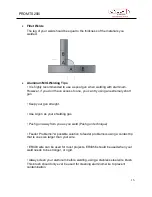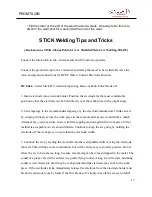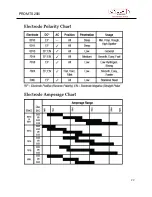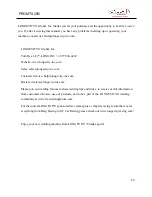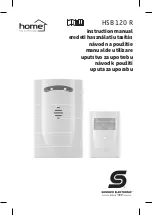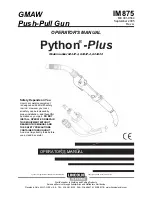
PROMTS 200i
18
flux and bare metal meet. A welding rod must have flux to shield the weld from the
atmosphere or the weld will fail.
4. Use the Current control to change arc qualities. Adjust the amperage according to the
recommendations of the electrode (welding rod) manufacturer for the type and size of the
electrode used. Experimentation will be required to find the optimal setting desired. It is an
excellent tool for out of position welding.
5. Electrode selection. Electrodes are usually given performance and characteristic ratings
using a system of letters and numbers determined by the American Welding Society (AWS).
The rating system includes the minimum tensile strength of the finished weld, the weld
position (flat, vertical, horizontal, or overhead or a combination of two or more positions) and
the flux type. Additional information may be given. Each manufacturer has their individual
name and terminology as well.
As there is no general recommendation that can be made about a particular electrode selection,
except for practice welds, a electrode designated by the AWS as E 6011, E 6013, E 7014, or E
7018 may be used, each having its own distinct features and purpose. These are among the
most common electrodes used in the industry and are not difficult to find. E 6011 electrodes
are not as smooth running as some of the other electrodes, but offer the advantage of being
able to weld on rusty metal and contaminated surfaces. It is widely used and requires very little
skill to begin using. This is not a particular endorsement of an E6011, rather a simple example
of what may be used in developing proficient technique. It is recommended that a variety of
electrodes be used and practiced with. Consultation with an experienced local welding supplier
will help greatly in determining what welding electrode is the best for your given situation.
Many times, samples or small packages of electrodes are available at relatively low cost.













